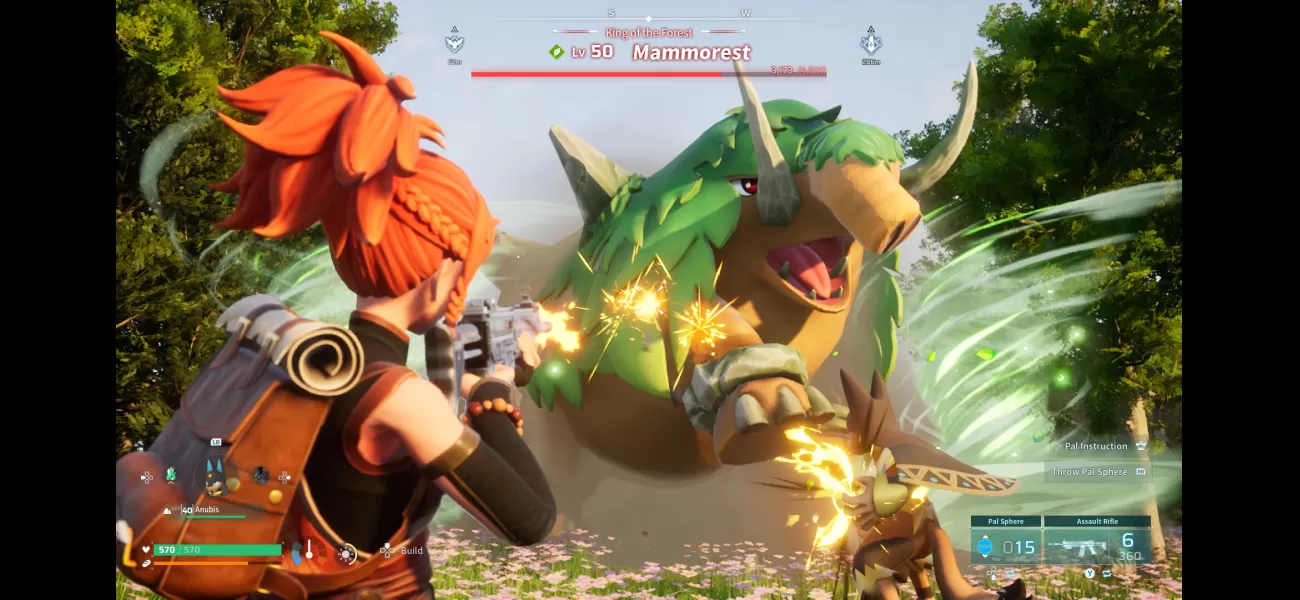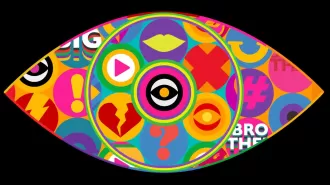Palworld, a new early access game, seems poised to give Pokémon a run for its money as the ultimate monster-catching and raising experience.
A unique combination of survival and shooting, this Pokémon clone is the year's biggest game.
January 22nd 2024.

Palworld is a new, unconventional game that combines elements of survival games and third-person shooters, with a twist of being a Pokémon clone. The game has been gaining a lot of attention and has quickly become one of the biggest games of the year.
It's no secret that The Pokémon Company's Gen IX was not well received, with technical issues plaguing the game and its subsequent DLCs. This highlights the pressure on developer Game Freak to churn out new games with limited resources. However, Palworld, developed by Japanese indie studio Pocketpair, seems to have surpassed any official Pokémon game in terms of quality and creativity.
But Palworld is not just a simple clone of Pokémon. It's a bizarre and unique game that stands out among similar titles like Cassette Beasts and Temtem. The game offers a lot for The Pokémon Company to learn from, but at the same time, it raises concerns about its content and the heavy reliance on AI-generated art and ideas.
Given the limited number of high-profile cases, it's difficult to sue developers for similarities in characters, locations, or concepts. Yet, anyone who has played a recent Pokémon game will immediately notice the striking similarities in Palworld. It's a patchwork of borrowed ideas from various games, with survival games like Rust and Ark: Survival Evolved being the most significant influence. However, Palworld adds its own twist to the genre, with a focus on building a base and crafting items.
While collecting Pals is an essential aspect of the game, it's not the only goal. The game is filled with human enemies that will try to shoot you on sight, making it crucial to build a strong base for defense. But what sets Palworld apart is the use of captured Pals as allies in third-person battles, similar to The Division in a cartoonish Pokémon world. Some Pals can even wield weapons, adding a unique element to the gameplay.
But Palworld is not without its flaws. It heavily borrows ideas from other games, and its combat and dungeon designs can be generic and unexciting. The game's most original aspect is the ability to breed Pals and use them for manual labor in your base. While this may seem reasonable in terms of gameplay, the way it's portrayed on-screen can be disturbing.
There have also been discussions about Pocketpair using AI image generation to create the Pal designs, potentially training them on real Pokémon. This has sparked ethical concerns and questions about the game's originality. Ironically, the AI in the game itself is quite terrible, with Pals and human enemies often getting stuck or confused.
Despite its flaws, Palworld has gained immense popularity, with over 1 million players on Steam and four million copies sold in just three days. It's a testament to the game's unique concept and gameplay, which has resonated with players. However, with only co-op options currently available, there's still room for the game to grow and evolve. Only time will tell what the future holds for Palworld, but one thing is for sure – it's a game like no other.
Have you heard of Palworld? It's the latest and perhaps most unique addition to the world of pocket monster hunting. But it's not your typical Pokémon game. In fact, it's a combination of a survival game and a third person shooter. And despite being in early access, it's quickly become the biggest game of the year.
It's safe to say that the release of Gen IX didn't go so well for The Pokémon Company. Many criticized the technical issues and the subsequent DLC only made things worse. This highlights the tough spot that developer Game Freak is in - having to churn out new games at a rapid pace with limited resources.
But let's talk about Palworld. Developed by the Japanese indie studio Pocketpair, this game looks better than any official Pokémon game we've seen. However, it's not a straightforward clone like other games such as Cassette Beasts or Temtem. No, Palworld is a whole different level of strange.
There's a lot that The Pokémon Company and other developers can learn from Palworld. But at the same time, this game is not without its flaws and can even be unsettling at times. Not just because of its content, but also because of how much it borrows from other games and relies on AI-generated content.
You might be wondering why there haven't been any lawsuits over the similarities between Palworld and other properties. Well, it's probably because there aren't many high-profile examples of this type of game. And it's not easy to sue someone when the similarities are in-game characters, locations, or concepts.
Speaking of gameplay, the most prominent influence on Palworld is not Pokémon. It's actually survival games like Rust and Ark: Survival Evolved. While you won't die of starvation quickly, it's still a factor to consider. And like most survival games, there are no specific goals or story, so your first priority is to build a base for shelter and crafting.
Collecting Pals (the creatures in Palworld) is important, but it's not the only focus. You'll also encounter human enemies who will try to shoot you on sight. And when you capture Pals, you can use them as allies in third person battles, similar to The Division but set in a more cartoonish world. Some Pals can even wield weapons themselves.
But Palworld isn't exactly original. It's a patchwork of ideas and features from various games like Zelda: Breath of the Wild, Monster Hunter, and Minecraft. However, it's not a mindless copy - the third person combat is well done and the boss battles are fun. But the game's lack of originality is most evident when you bring Pals back to your base.
Here's where things get really strange. Pals don't evolve, but you can breed them. And most of them are put to work in your base, helping with tasks like building structures and crafting items. While this is a common gameplay mechanic, the way it's portrayed in Palworld can be disturbing. For example, you can order a Pal to craft a knife and then use it on their fellow Pals to turn them into food.
If you think that's questionable, there are other ethically questionable aspects to the game, like the use of AI-generated Pal designs based on real Pokémon. Many players have pointed out the striking similarities between some Pals and existing Pokémon, raising questions about the use of AI in creating them.
Ironically, the AI in the game is not very good, with Pals and human enemies often getting stuck or confused. The visuals may be better than some official Pokémon games, but there are still issues with collision detection and missing animations. And the user interface is also lacking, but since the game is in early access, there is room for improvement.
Despite its flaws, Palworld has already surpassed 1 million players on Steam and sold 4 million copies in less than three days. And that's without any competitive gameplay. It's unclear what the future holds for the game - it could continue to be a massive success or fade away quickly. Only time will tell.
It's no secret that The Pokémon Company's Gen IX was not well received, with technical issues plaguing the game and its subsequent DLCs. This highlights the pressure on developer Game Freak to churn out new games with limited resources. However, Palworld, developed by Japanese indie studio Pocketpair, seems to have surpassed any official Pokémon game in terms of quality and creativity.
But Palworld is not just a simple clone of Pokémon. It's a bizarre and unique game that stands out among similar titles like Cassette Beasts and Temtem. The game offers a lot for The Pokémon Company to learn from, but at the same time, it raises concerns about its content and the heavy reliance on AI-generated art and ideas.
Given the limited number of high-profile cases, it's difficult to sue developers for similarities in characters, locations, or concepts. Yet, anyone who has played a recent Pokémon game will immediately notice the striking similarities in Palworld. It's a patchwork of borrowed ideas from various games, with survival games like Rust and Ark: Survival Evolved being the most significant influence. However, Palworld adds its own twist to the genre, with a focus on building a base and crafting items.
While collecting Pals is an essential aspect of the game, it's not the only goal. The game is filled with human enemies that will try to shoot you on sight, making it crucial to build a strong base for defense. But what sets Palworld apart is the use of captured Pals as allies in third-person battles, similar to The Division in a cartoonish Pokémon world. Some Pals can even wield weapons, adding a unique element to the gameplay.
But Palworld is not without its flaws. It heavily borrows ideas from other games, and its combat and dungeon designs can be generic and unexciting. The game's most original aspect is the ability to breed Pals and use them for manual labor in your base. While this may seem reasonable in terms of gameplay, the way it's portrayed on-screen can be disturbing.
There have also been discussions about Pocketpair using AI image generation to create the Pal designs, potentially training them on real Pokémon. This has sparked ethical concerns and questions about the game's originality. Ironically, the AI in the game itself is quite terrible, with Pals and human enemies often getting stuck or confused.
Despite its flaws, Palworld has gained immense popularity, with over 1 million players on Steam and four million copies sold in just three days. It's a testament to the game's unique concept and gameplay, which has resonated with players. However, with only co-op options currently available, there's still room for the game to grow and evolve. Only time will tell what the future holds for Palworld, but one thing is for sure – it's a game like no other.
Have you heard of Palworld? It's the latest and perhaps most unique addition to the world of pocket monster hunting. But it's not your typical Pokémon game. In fact, it's a combination of a survival game and a third person shooter. And despite being in early access, it's quickly become the biggest game of the year.
It's safe to say that the release of Gen IX didn't go so well for The Pokémon Company. Many criticized the technical issues and the subsequent DLC only made things worse. This highlights the tough spot that developer Game Freak is in - having to churn out new games at a rapid pace with limited resources.
But let's talk about Palworld. Developed by the Japanese indie studio Pocketpair, this game looks better than any official Pokémon game we've seen. However, it's not a straightforward clone like other games such as Cassette Beasts or Temtem. No, Palworld is a whole different level of strange.
There's a lot that The Pokémon Company and other developers can learn from Palworld. But at the same time, this game is not without its flaws and can even be unsettling at times. Not just because of its content, but also because of how much it borrows from other games and relies on AI-generated content.
You might be wondering why there haven't been any lawsuits over the similarities between Palworld and other properties. Well, it's probably because there aren't many high-profile examples of this type of game. And it's not easy to sue someone when the similarities are in-game characters, locations, or concepts.
Speaking of gameplay, the most prominent influence on Palworld is not Pokémon. It's actually survival games like Rust and Ark: Survival Evolved. While you won't die of starvation quickly, it's still a factor to consider. And like most survival games, there are no specific goals or story, so your first priority is to build a base for shelter and crafting.
Collecting Pals (the creatures in Palworld) is important, but it's not the only focus. You'll also encounter human enemies who will try to shoot you on sight. And when you capture Pals, you can use them as allies in third person battles, similar to The Division but set in a more cartoonish world. Some Pals can even wield weapons themselves.
But Palworld isn't exactly original. It's a patchwork of ideas and features from various games like Zelda: Breath of the Wild, Monster Hunter, and Minecraft. However, it's not a mindless copy - the third person combat is well done and the boss battles are fun. But the game's lack of originality is most evident when you bring Pals back to your base.
Here's where things get really strange. Pals don't evolve, but you can breed them. And most of them are put to work in your base, helping with tasks like building structures and crafting items. While this is a common gameplay mechanic, the way it's portrayed in Palworld can be disturbing. For example, you can order a Pal to craft a knife and then use it on their fellow Pals to turn them into food.
If you think that's questionable, there are other ethically questionable aspects to the game, like the use of AI-generated Pal designs based on real Pokémon. Many players have pointed out the striking similarities between some Pals and existing Pokémon, raising questions about the use of AI in creating them.
Ironically, the AI in the game is not very good, with Pals and human enemies often getting stuck or confused. The visuals may be better than some official Pokémon games, but there are still issues with collision detection and missing animations. And the user interface is also lacking, but since the game is in early access, there is room for improvement.
Despite its flaws, Palworld has already surpassed 1 million players on Steam and sold 4 million copies in less than three days. And that's without any competitive gameplay. It's unclear what the future holds for the game - it could continue to be a massive success or fade away quickly. Only time will tell.
[This article has been trending online recently and has been generated with AI. Your feed is customized.]
[Generative AI is experimental.]
0
0
Submit Comment





